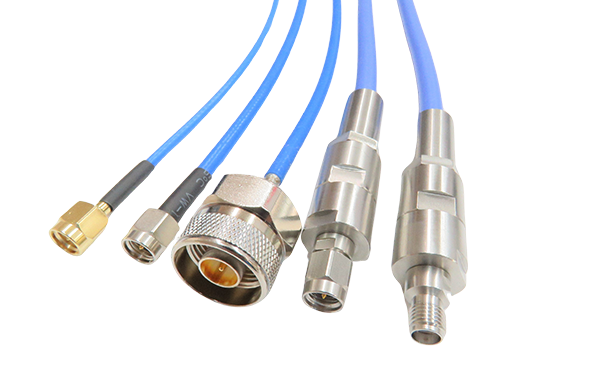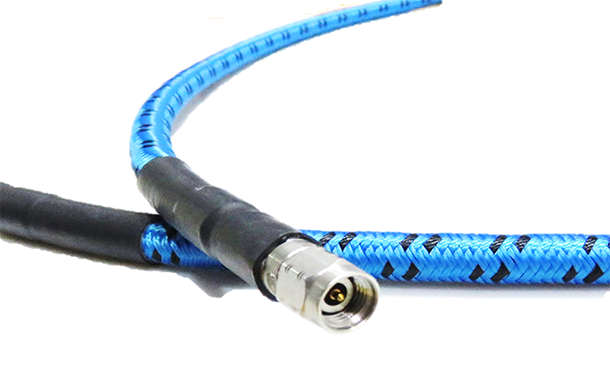- HOME
- Applications
- Blog
- What is RF Microwave? Mastering Technology Applications and Key Components for More Stable Wireless Communication!
What is RF Microwave? Mastering Technology Applications and Key Components for More Stable Wireless Communication!
25-04-11
RF microwave technology covers frequency ranges up to 300GHz and is the cornerstone of modern wireless communication. It is widely used in fields such as AM/FM broadcasting, mobile communication, Wi-Fi, Bluetooth, satellite communication, and radar. This article will guide you on how to select high-quality RF and microwave components to enhance the transmission stability and reliability of wireless communication systems, successfully creating a high-performance RF Microwave system!
What is RF Microwave?
RF microwave technology was first invented by Western Union. In the early 1940s, the first message transmitted from New York to Philadelphia was accomplished using microwave radio frequency technology. This method of transmission greatly simplified the process of sending and receiving microwave data and quickly became the preferred choice for telecommunications service providers, later being widely adopted by the broadcasting industry. Currently, in some remote areas, especially mountainous regions, RF microwave equipment remains the most cost-effective transmission option due to the high costs of laying cables for microwave equipment.
〈Extended reading: Microwave Technology Principles and Applications〉
Core Features of RF Microwave Technology
Radio Frequency (RF) and Microwave are specific frequency ranges within electromagnetic waves, widely used in wireless communication. The core advantages of RF Microwave technology lie in its stable signal transmission capabilities, providing low latency and high bandwidth data transmission, suitable for long distances, dense networks, and real-time communication needs. RF microwave communication transmits high-frequency electromagnetic waves, typically between 1 GHz and 300 GHz, for signal transmission. These frequency bands enable high-speed data and voice signal transmission, making them an ideal choice for wide-area, high-speed wireless communication!
〈Extended reading: What is high frequency? High Frequency Features and Applications! 〉
Main Application Areas of RF Microwave
The frequency range of RF microwave is approximately between 300 MHz and 300 GHz, covering the RF bands of UHF, SHF, and EHF. It is widely used in the following industrial fields:
Cellular Network and 5G Network
In the modern mobile communication field, the microwave frequency band plays a key role in the development of 5G networks. By utilizing oscillation frequencies ranging from 24 GHz to 100 GHz, 5G networks can achieve ultra-high-speed data transmission, providing extremely low latency and enhanced bandwidth. This supports high-demand applications such as virtual reality (VR) and augmented reality (AR), bringing breakthroughs to industries like entertainment and automotive.
Satellite Communication and Aerospace Technology
Radio frequency microwave technology is indispensable in satellite communication, especially in the 4 GHz to 8 GHz and 12 GHz to 18 GHz ranges. These frequencies enable long-distance signal transmission and can penetrate the atmosphere, ensuring stable communication between satellites and ground stations. Its applications include weather forecasting, disaster monitoring, and navigation, showcasing the diverse applications of microwave technology in the aerospace field.
〈Extended reading: The Ultimate Guide to RF Attenuators: Definition, Functions, and Applications〉
Military Radar Systems
Radio frequency microwave technology is also very common in modern military and radar systems. Through microwave frequencies, radar systems can accurately detect the position, speed, and distance of objects, playing a crucial role in national defense and air traffic control. In addition, these technologies, combined with early warning systems and electronic warfare strategies, effectively enhance homeland security and strengthen overall defense capabilities.
Alarm Monitoring System
Digital Microwave RF is a more advanced radio frequency microwave data transmission technology that offers higher transmission capacity and faster data transfer. It effectively enhances data transmission speed, reduces system polling time, and continuously monitors network communication. Digital Microwave RF is widely used across various industries, particularly in fields that require stable network communication, such as telecommunications, monitoring systems, and enterprise networks. To ensure network stability, utilizing Digital Microwave RF technology to establish an alarm monitoring system can promptly detect and repair equipment failures, reduce business losses caused by network interruptions, and improve customer satisfaction and service reliability.
TEST & MEASUREMENT
Radio frequency (RF) and microwave testing technology is key to the success of wireless systems and is crucial for the development, validation, and maintenance of RF components and systems! It encompasses the measurement and analysis of electromagnetic waves to ensure stable signal transmission across various applications, such as wireless communication, broadcasting, radar, and satellite systems. RF and microwave testing evaluates the performance, strength, and quality of signals, ensuring compliance with specific standards and regulations. Additionally, RF and microwave testing ensures electromagnetic compatibility (EMC), including radiation control and anti-interference capabilities, preventing signal interference and ensuring that electronic devices operate stably in different environments.
For the design and manufacture of high-performance components, RF and microwave material measurement is equally important. Understanding the electromagnetic properties of materials can effectively optimize system performance. The market utilizes vector network analyzers (VNA) to conduct fast, accurate, and non-destructive high-frequency characteristic measurements of the material under test (MUT), confirming that the materials meet application requirements and enhancing design effectiveness.
〈Extended reading: How to Choose the Right RF Adapter? Specifications, Applications, and Selection Guide〉
Various Industrial Sectors
- Food Industry: Radio frequency microwave technology is applied in food disinfection, drying, thawing, and cooking, enhancing processing efficiency through high-frequency electromagnetic waves while ensuring food quality and safety.
- Industrial Drying: Radio frequency microwaves can be used for drying various industrial raw materials and products, such as silicon dioxide powder and polyamide powder, achieving rapid and uniform moisture removal, thus improving production efficiency and quality.
- Chemical Industry: Radio frequency microwave technology plays an important role in the chemical field, enabling efficient extraction of natural chemical raw materials and enhancing the reaction rate and yield of chemical synthesis, optimizing production processes.
- Energy Industry: Through radio frequency microwave atmospheric plasma technology, methane can be cracked to produce hydrogen and carbon black, providing efficient and environmentally friendly solutions for energy development.
- Semiconductor Industry: Radio frequency microwave ECR plasma technology can be applied in semiconductor processes, such as etching and surface modification, meeting the demands for precision processing and enhancing component performance and yield.
- Scientific Research: Radio frequency microwave technology has a wide range of applications in scientific research, including exploring the effects of high-frequency electromagnetic waves on material properties, microwave sintering of ceramics, and serving as a key technology for particle accelerators, promoting the development of both fundamental and applied research.
How to Enhance the Performance of RF Microwave Systems? RF Microwave Components are Key!
To create a high-performance RF Microwave system, it is essential to consider the following key components. These components play a crucial role in the stability of wireless communication, transmission quality, and efficiency in RF microwave systems. They typically require precision design and adjustment to ensure the system's superior performance. Here are some common RF microwave components:
- RF microwave coaxial connectors: This is an electronic connector used to connect coaxial cables to circuit boards for the transmission of RF microwave signals. They are primarily used to connect the cable ends of RF or microwave spectrum systems to circuit boards, providing reliable solutions for high-frequency electromagnetic waves and high-density connection applications!
- RF microwave adapters: Common RF microwave adapters include SMA straight male to female adapters, SMA straight male to N male adapters, etc. They are mainly used to connect or adapt different types of RF microwave system components.
- RF microwave cable assemblies: RF microwave transmission lines include microstrip lines, coaxial cables, waveguides, etc. They are primarily used to effectively transmit RF signals from one location to another, ensuring signal stability and efficiency.
- RF antennas: Responsible for receiving and transmitting RF signals, they come in various types, including dipole antennas, monopole antennas, directional antennas, and scanning antennas, allowing for the selection of suitable types based on application needs.
- RF filters: These selectively pass or block signals within specific frequency ranges. Common types include bandpass filters and bandstop filters, which can be used to optimize signal quality and reduce interference.
- RF mixers: These can mix two or more signals of different frequencies to generate new frequency components, widely used in spectrum analysis and frequency conversion for signal processing.
- RF oscillators: Used to generate stable RF signals, they typically serve as clock signals or local oscillators and are widely applied in transceiver systems to ensure precise frequency control.
- RF amplifiers: Used to increase the amplitude of RF signals, common types include amplifier modules, transistor amplifiers, and power amplifiers, selectable based on application requirements.
- RF power dividers and couplers: RF power dividers and couplers are for distributing RF signals to multiple paths or combining signals from different paths, ensuring effective signal transmission across all paths.
- RF modulators and demodulators: RF modulators modulate baseband signals onto RF carriers, while RF demodulators are responsible for extracting baseband signals from RF signals.
- RF integrated circuits (RFIC): These are integrated circuits specifically designed for RF microwave applications, including RF amplifiers, mixers, filters, and other related functions, aimed at enhancing the performance and integration of RF systems.
〈Related Product: RF Connectors, RF Adapters, Machining Parts, RF Cable Assembly〉
〈Extended reading: SMA Connectors - The Most Common RF Connectors〉
〈Extended reading: 5 Minute Guide to Understanding the Uses and Applications of SMA Adapters〉
Common Questions and Answers about RF Microwave
What is the Difference Between RF and Microwave?
Radio Frequency (RF) and Microwave are both important frequency ranges in the electromagnetic spectrum, but they differ in frequency range and applications. RF ranges from 3 kHz to 300 GHz and is widely used in wireless communication, broadcasting, radar, and other fields. Microwave refers to electromagnetic waves with frequencies between 300 MHz and 300 GHz, characterized by shorter wavelengths and higher frequencies, making them suitable for high-speed data transmission and high-resolution imaging applications. In general, microwaves fall within the high-frequency segment of the RF range, and while there is overlap in their technical characteristics and application areas, microwaves are typically used for specialized applications that require high frequencies and short wavelengths.
〈Extended reading: Microwave Communication: The Core Technology of Modern Technology and the Key Role of RF Connectors〉
What are the Common Applications of RF Coaxial Connectors?
RF coaxial connectors are commonly used for high-frequency signal transmission, primarily in fields such as wireless communication, radar systems, satellite communication, and broadband networks. In short-distance applications, such as home audio and video equipment and radio devices, coaxial cables can effectively reduce signal loss and maintain stable transmission. In long-distance applications, RF microwave connectors play a critical role in radio and television networks, responsible for transmitting broadcast and television signals. Additionally, RF microwave connectors are used in large buildings, tunnels, and rail transit systems to provide stable wireless communication coverage, enhancing signal reliability and dependability.
〈Extended reading: What are RF Connectors?〉
〈Extended reading: RF Coaxial Connector: A Key Component for Optimizing Microwave Communications〉
How to Choose RF Microwave Cable Components?
When selecting RF microwave cable components, it is important to consider the operating frequency range, transmission distance, environmental conditions, and impedance matching. There are two methods for impedance matching: one is to change the impedance, which is suitable for lumped parameter circuits, and the other is to adjust the wavelength of the transmission line, which is appropriate for use in transmission lines.
〈Extended reading: What is Coaxial Cable and Characteristics〉
〈Extended reading: RF Cables Major Characteristics, Applications and Key Points for Selection〉
Conclusion
Radio frequency microwave technology is a key technology used for high-frequency signal transmission, applied in wireless communication, military aerospace, medical equipment, and high-frequency testing instruments. Its advantages lie in high performance, low loss, and stable signal transmission capabilities, allowing wireless communication systems to maintain good quality and reliability. The core of wireless communication is the radio frequency microwave components, with different applications requiring different types of components to meet specific needs, such as antennas, filters, amplifiers, and connectors, ensuring signal integrity and transmission efficiency. Huang Liang Technologies focuses on producing high-quality radio frequency microwave connectors, offering various connector solutions and the ability to customize the best radio frequency microwave systems according to your industry needs. For further information about our products, please feel free to contact us, and we will provide you with professional advice and services.〈Extended reading: What is mmWave? Advantages, Disadvantages and Applications!〉




